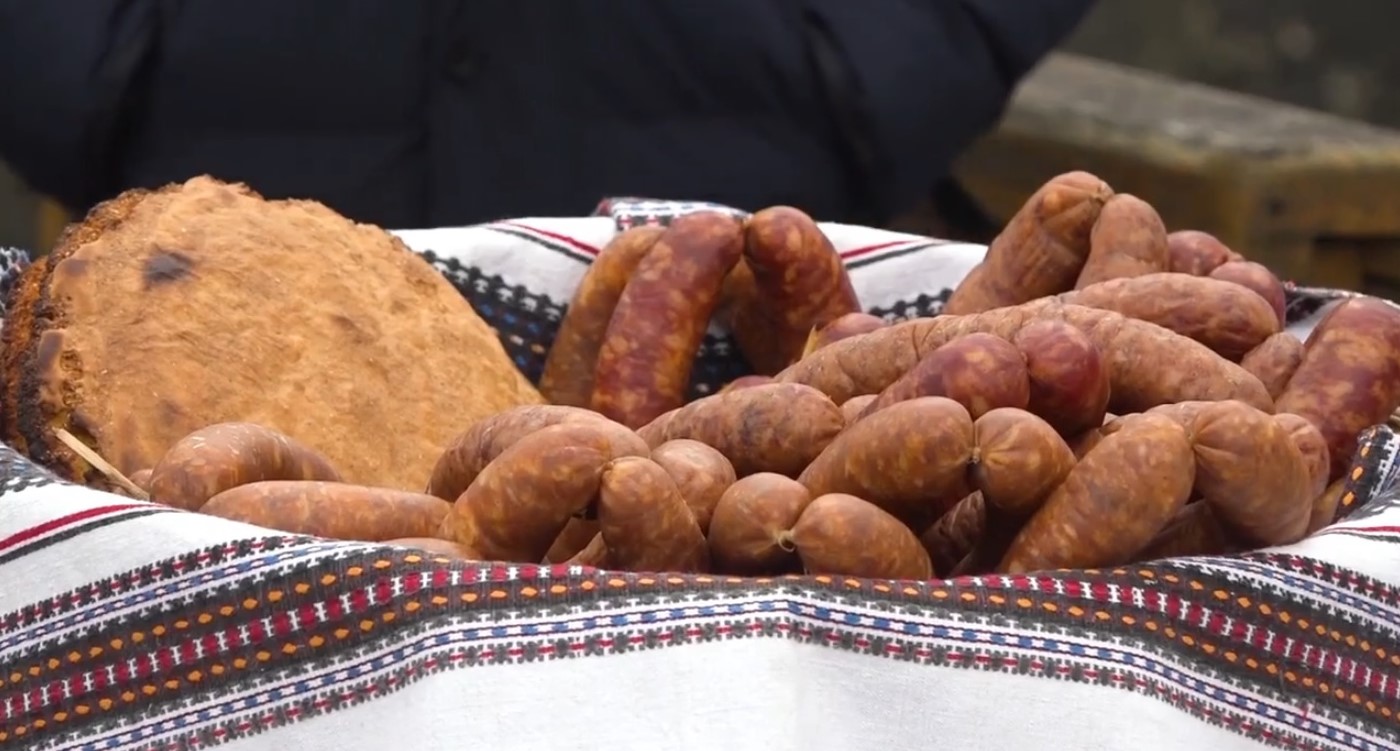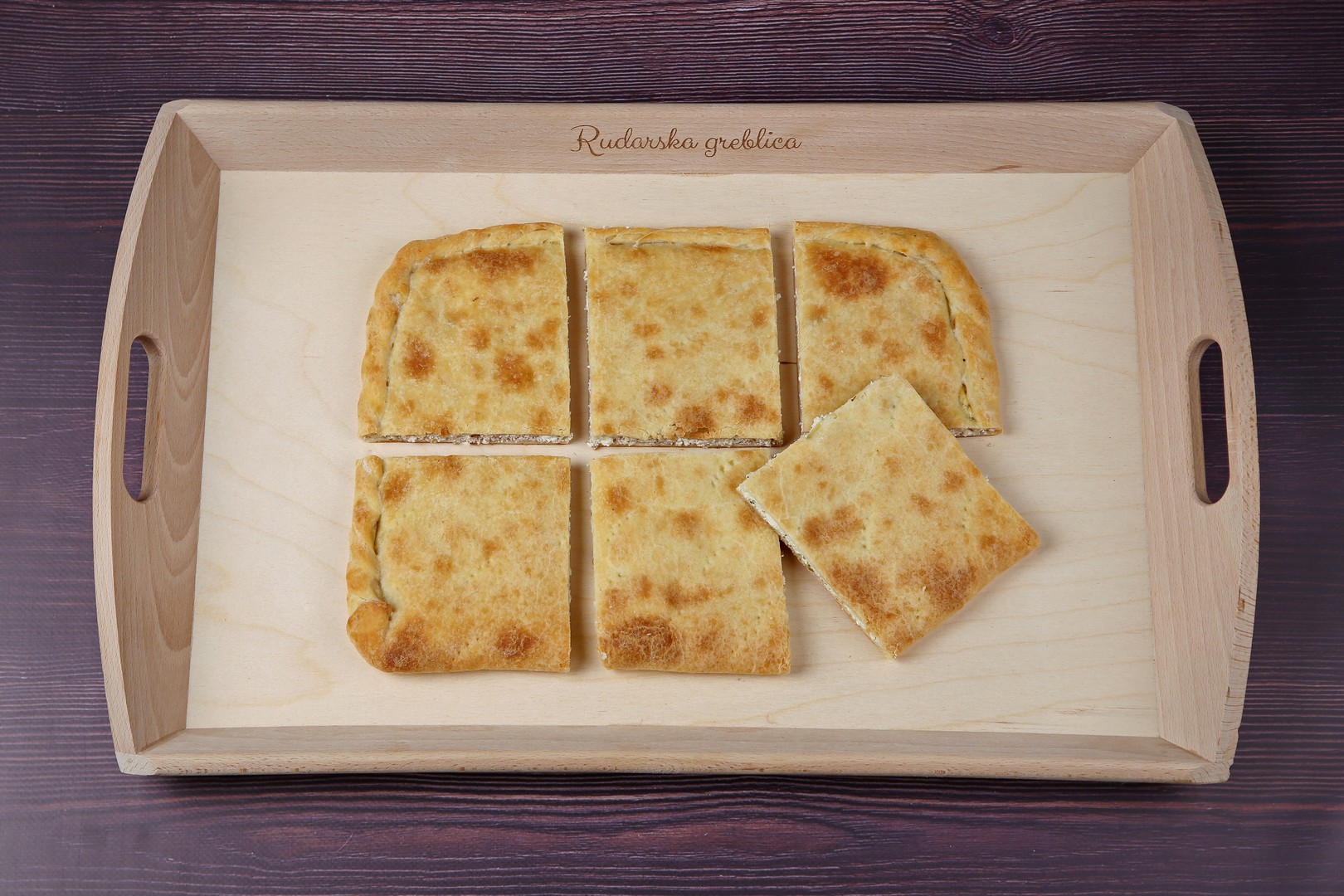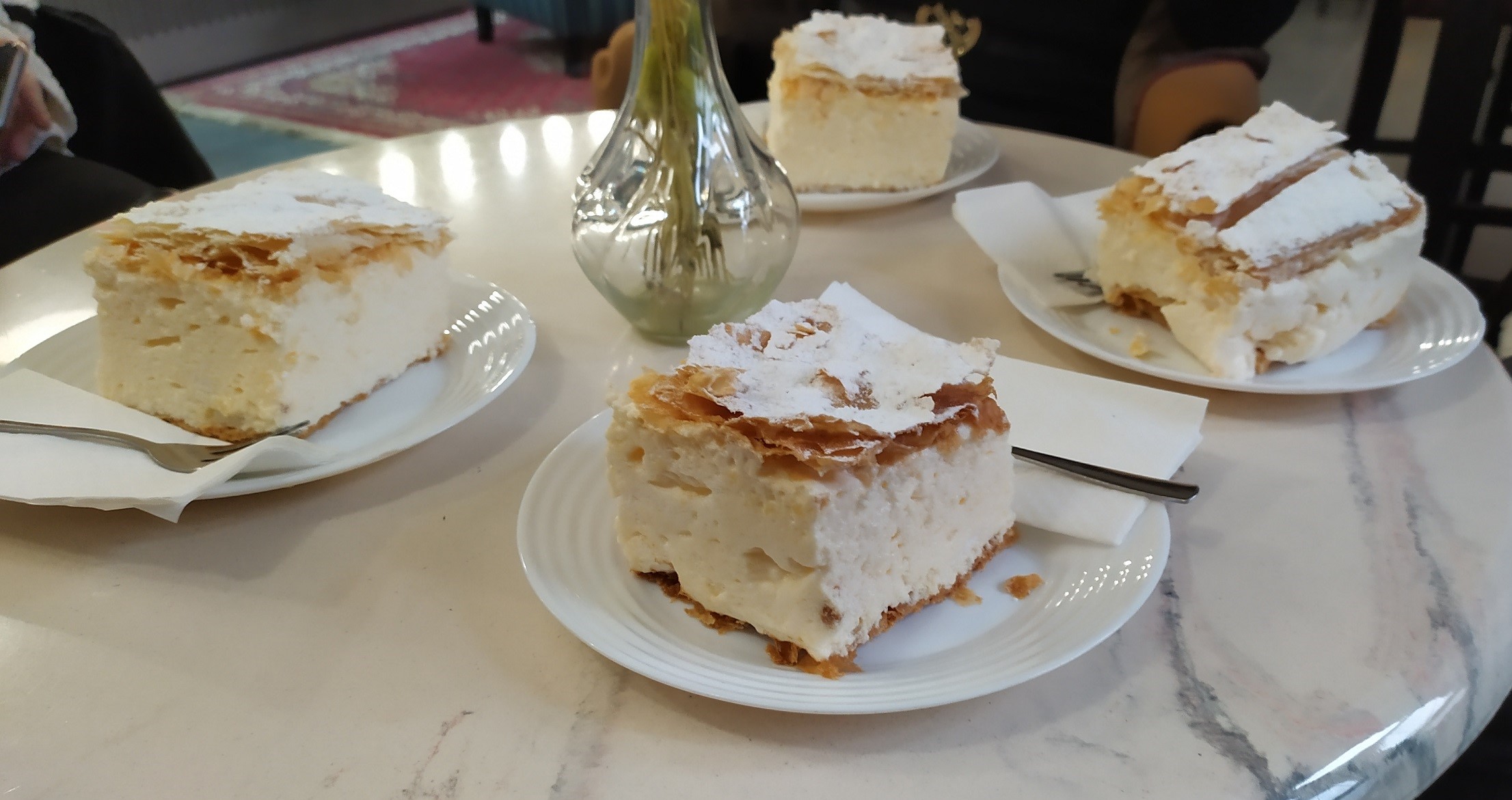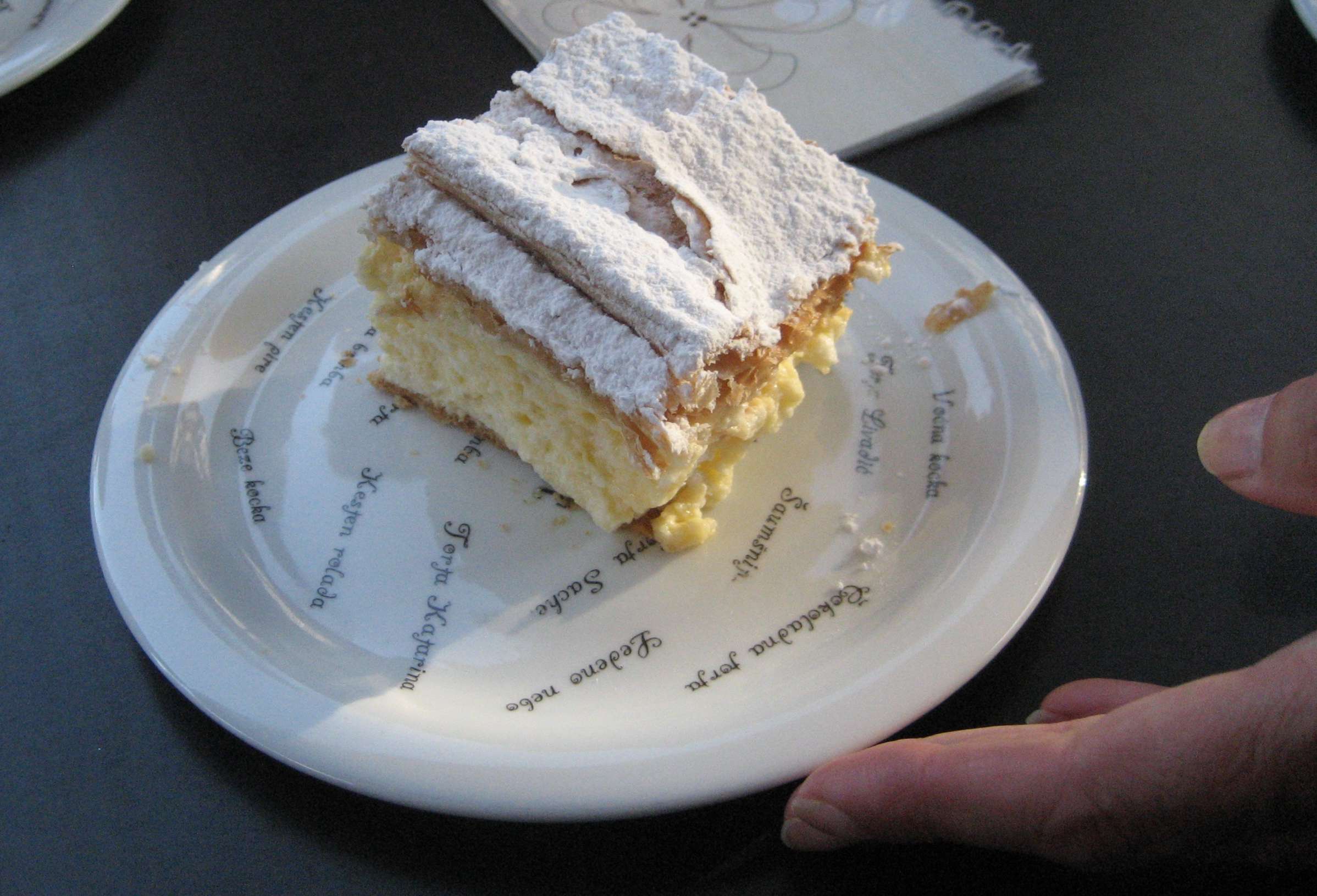Samoborska Cesnofka Becomes Protected Product After Kremsnita and Greblica
February 19, 2021 – In a relatively short period, more good news came from Samobor, both for the citizens of this tradition-rich town and its surroundings and for all local cuisine lovers. Namely, after the Rudarska greblica and samoborska kremsnita, samoborska cesnofka also became a protected product. Enough reason to visit this charming medieval town in Zagreb County this weekend?
Samoborska češnofka, a favorite Samobor garlic sausage, received national protection of geographical origin from the Ministry of Agriculture. This transitional protection at the national level is an essential first step towards gaining the status it deserves on the European gastronomic map.
Tradition of more than a hundred years
When the European Commission decides to protect it on the EU level, samoborska cesnofka will be protected from unauthorized use and misuse throughout the European Union market, just like Rudarska greblica now, a local specialty from Samobor area. However, Samoborska kremšnita entered the Croatian Register of Protected Cultural Heritage.
Samoborska češnofka, named after its main ingredient – a decoction of garlic (in Croatian – češnjak), has been produced for over a hundred years in a specific way from pork, beef, and lard, and a decoction of fresh garlic and dry wine, with each butcher adding its own flair to this recipe. It is eaten with greens, beets, potatoes, and goes best with traditional Samobor cornbread, which will be the next autochtonous Samobor product to get its protection.

The members of the Ethno Fletno Association are working on protecting Samobor cornbread, usually eaten with Samoborska cesnjofka, but also other home-made dishes. / Screenshot Televizija Zapad
A few years ago, the City of Samobor even launched the Češnofka Festival, but due to the coronavirus pandemic, it was not held last year. This year, it will be held if the epidemiological situation allows it. And not only that. On the occasion of protecting samoborska češnofka, the Deputy Mayor of Samobor, Željko Stanec, announced a center for various Samobor tradition guardians.
Samobor gastronomic delicacies available in the "to go" offer
The diligent hands of the people of this region write the history of taste worth experiencing. Although the restaurants are still closed, all the flavors of the Samobor region are available in the "to go" offer in the "K Gabreku 1929 "cellar, the favorite Kavana Livadić, and "U prolazu" confectionery for the well-known kremšnite in Samobor.
Therefore, you can spend this 'almost' spring weekend in Samobor, 30 minutes away from Zagreb's capital, with protected indigenous flavors. This charming town along the Slovenian border dates back to 1242 and the charter by which King Bela IV confirmed the status of a free royal trading post.

Samobor / Zagreb County Tourist Board
Also, Samobor Square is one of the few where all buildings are protected monuments of the first category. Right next to the main square, in the Filipec family tasting room, you can taste another Samobor gastronomic icon – bremet, the most famous liqueur in the Zagreb region. Samobor bermet is an aromatized red wine made from selected varieties of Portuguese and Frankovka grapes with wormwood and southern fruit. The secret recipe dates back to the time before Napoleon.
Zagreb people's favorite excursion destination
This urban pearl of Zagreb County, with its preserved old town, but also with numerous cultural sights, has always attracted excursionists and tourists.
A walk through Samobor comes across the Samobor Museum, the former dock of the composer Ferdo Livadić and a gathering place for cultural greats of that time. The Old Samobor Town ruins, a former castle that watches over the town in the lowlands, hide its turbulent history.
From 1268 until recently, this building was owned by many different families. It used to flourish with life, and now there is only one beautiful monument left to the destructive ravages of time. Over the centuries, numerous nobles and kings were the lords of Samobor-grad, from the Czech king Otokar, who built it in 1268, to Arpadović, Frankopan, Erdody, Matija Korvin, and many other blue blood families.

Ruins of Samobor Old Town / R. Klarić, Zagreb County Tourist Board
As the owners changed, so did this castle. In 1902, the Old Town ended up in Samobor's ownership for 5,293 crowns. Since then, attempts have been made to rebuild it, but no attempt has borne fruit. But maybe even better, because the castle in this form has some magic that it might not have if it wasn't in this state. There is a spirit of the time in it. It hides among the walls and swims among the surrounding trees. This place truly breathes some unique energy. The fort is located in a forest not far from the center of Samobor.
Oh, and did you know that Samobor's Old Town was almost fatal for Jackie Chan, who nearly perished here while shooting the famous film God's Armor?
Oldest mine, nature park, mountain peaks, and educational trails
Only five kilometers away from Samobor, in the Rude village, you can visit the Mine of St. Barbara, one of Europe's oldest copper and iron mines. This small settlement gave rise to the mentioned first protected gastronomic product of the Zagreb County – a crispy salt pie Rudarska greblica, once a modest snack of local miners.

Rudarska greblica / Josip Škof, Zagreb County Tourist Board
Outside Samobor, with a walk in the fresh air, unforgettable views uphill of the Samobor Hills, a protected Nature Park together with Žumberak, await to be discovered. There are many marked trails, and they will satisfy both beginner walkers and ambitious climbers. Although none of them is higher than 1000 meters, the peaks Oštrc, Japetić, and Okić are key places in Croatian mountaineering.
The first trip under the Croatian Mountaineering Association's auspices was organized in 1875 to Oštrc, and the ascent of the writer Dragojla Jarnević on the steep side of Okić in 1843 was Croatian's first recorded alpine venture.
You can add an educational note to the trip by visiting the Budinjak Eco Center and the Educational Trail of Princes, a prehistoric site with a site of old burial mounds, or the Ethno House under Okić. In this rural household, time stood still more than a century ago.

Welcome to Samobor / Josip Škof, Zagreb County Tourist Board
Source: Zagreb County Tourist Board
To read more news from Croatia, follow TCN's dedicated page.
Samoborska Kremsnita Awarded Status of Intangible Cultural Good!
February 2, 2021 – According to the Ministry of Culture and Media's decision, the traditional dessert samoborska kremsnita, as well as the transfer of skills, practices, and traditions of confectionery, has received the status of an intangible cultural good. It will be inscribed in the Register of Protected Cultural Heritage of the Republic of Croatia.
As reported from the City of Samobor, the most popular local dessert, samoborska kremšnita, is now legally protected as an autochthonous Samobor and Croatian brand. As of January 18, 2021, samoborska kremšnita wears the title of intangible cultural property of Croatia.
As the Ministry explained, this dessert made of puff pastry and whipped egg cream is known by various names and variants in Central and Mediterranean countries. One of the most famous in Croatia comes from Samobor.
The original recipe was created in the 1920s by confectioner Đuro Lukačić, who prepared them until 1966, after which he assisted in their making. Two confectioners, Višnja Vukmanović and Branka Žganjer transferred the original recipe and knowledge to Kavana Livadić and the pastry shop "U prolazu," which are also holders of the intangible cultural property.

Samobor / Donatella Pauković
The tradition of making samoborska kremšnita is cherished in these pastry shops to this day so that this foamy dessert is enjoyed by many visitors, guests, tourists, excursionists, and mountaineers.
The queen of all cakes is how she is called in Samobor. Samoborska kremsnita is one of the symbols and the first association with Samobor in Croatia and abroad. It's a dessert that encourages people to visit. It is almost unthinkable to visit Samobor and not taste a nice light yellowish cream between the crispy puff pastry.
Sometimes, you must wait in line for samoborska kremšnita, but that is fine. It is brought home as a souvenir from Samobor, even if it has cooled down on the way.
There are several recipes for this cake, but samoborska kremšnita is unique because of its preparation and the Samobor ambiance that should be enjoyed while eating it.
The samoborska kremšnita is truly an exceptional dessert worthy of admiration. It also testifies that it was, along with popular Croatian cake mađarica, recently declared one of the 100 most popular cakes in the world according to the TasteAtlas portal, taking 84th place on their list.

Samoborska kremšnita enjoyed in one of Samobor's pastry shops / Donatella Pauković
However, samoborska kremšnita is not the first dessert from the Samobor area that received this title. Namely, a salty cake originating from the village of Ruda near Samobor named rudarska greblica was also declared a protected intangible cultural good. According to tradition, this cake used to be prepared back in the 16th century when mining flourished in Rude. Their wives made this cake for local miners. The "Days of Rudarska Greblica" event has been held in the village of Rude for years.
Since it is impossible to travel and taste traditional dishes of different destinations due to the ongoing coronavirus pandemic, you can always try to make samoborska kremšnita yourself at home. Of course, nothing can replace a visit to Samobor and tasting traditional kremšnita in the ambiance of this beautiful medieval town, but until we can do it again, use your time to try this recipe.
Two Croatian Cakes Among Top 100 Most Popular in the World!
November 15, 2020 – On the list of the top 100 most popular cakes in the world by Taste Atlas, two Croatian cakes, samoborska kremšnita and mađarica, have deservedly found their place.
After a famous fish dish of Slavonia and Baranja – fiš paprikaš – recently appeared on the list of the top 100 best traditional dishes in the world, it is now time for Croatian desserts to find their place among the most popular ones in the world.
According to TasteAtlas, the global food map guide, two Croatian cakes, samoborska kremšnita and mađarica, were listed among the top 100 most popular cakes in the world. In the competition with the world's most popular cakes, such as German Schwarzwald cake or Italian Ciambella, samoborska kremšnita, originally from the Croatian town of Samobor near Zagreb, took 84th place on the list, and widely-known Croatian cake mađarica took a high 41st place.
Unique souvenir from Samobor
Being the most recognizable symbol and the first association of the town of Samobor is what makes samoborska kremšnita the queen of all cakes for Samobor residents. It is almost unthinkable to visit Samobor without tasting this fine light yellowish cream between the crispy puff pastry.
Samoborska kremšnita / Wikimedia Commons
"Samoborska kremšnita consists of two layers of puff pastry that are filled with custard cream. A thin layer of whipped cream is sometimes placed on top of the custard. The whole cake is typically dusted with powdered sugar, and before serving, the cake is sliced into squares. Kremšnita can be eaten warm or chilled. It is believed that this tasty dessert was invented by pastry chef Đuro Lukačić who had worked in Vienna and Budapest, and upon arriving in Samobor, he modified some of their recipes to create Samoborska kremšnita, which proved to be a huge hit to this day," reads the description of samoborska kremšnita on TasteAtlas.
It is one of the main reasons why Samobor is gladly visited, and many take more of it as a souvenir, so they can enjoy its taste even when they're home. The first kremšnita cakes were made in the confectionery owned by Marko Lukačić, Đuro's brother, located on the Samobor Square. There are several recipes for this cake, but Samoborska kremšnita is unique because of its preparation, but also because of Samobor and the ambiance in which you should enjoy it.
Mađarica or the "Hungarian girl"
On the other hand, the mađarica cake does not have its town of origin but is widely-know in the whole of Croatia as an unavoidable festive and Christmas dessert. As TasteAtlas writes, "although not much is known about its origin or etymology, mađarica is believed to be an original Croatian dessert that was modeled on traditional Hungarian layered cakes," which explains her name meaning "Hungarian girl".
"The layers are coated in a velvety, chocolate-infused cream, and the whole cake is finished with a dark chocolate glaze," reads the description of mađarica on TasteAtlas.
Over 300 different recipes for mađarica can be found on various internet portals, and some believe that mađarica is the Croatian variant of the Hungarian cake called dobos torte, which is ranked 40th on this list, only one place ahead of mađarica.

Croatian cake mađarica / Screenshot YouTube, Domaći recepti
Also, the same as with the mađarica and dobos torte cake, the name, appearance, and origin of samoborska kremšnita are irresistibly reminiscent of the Austrian cake cremeschnitte, which took a high third place on this list, and which had a great influence on the creation of the Samobor version. The title of the world's most popular cake went to the Australian and New Zealand's Pavlova cake, followed by the Japanese Kasutera cake which took second place.
Although these two Croatian cakes have undoubtedly arisen under the influence of the above mentioned neighboring Austrian and Hungarian cakes, by making it to this list, they proved their competence to be in the company of world-famous desserts.



